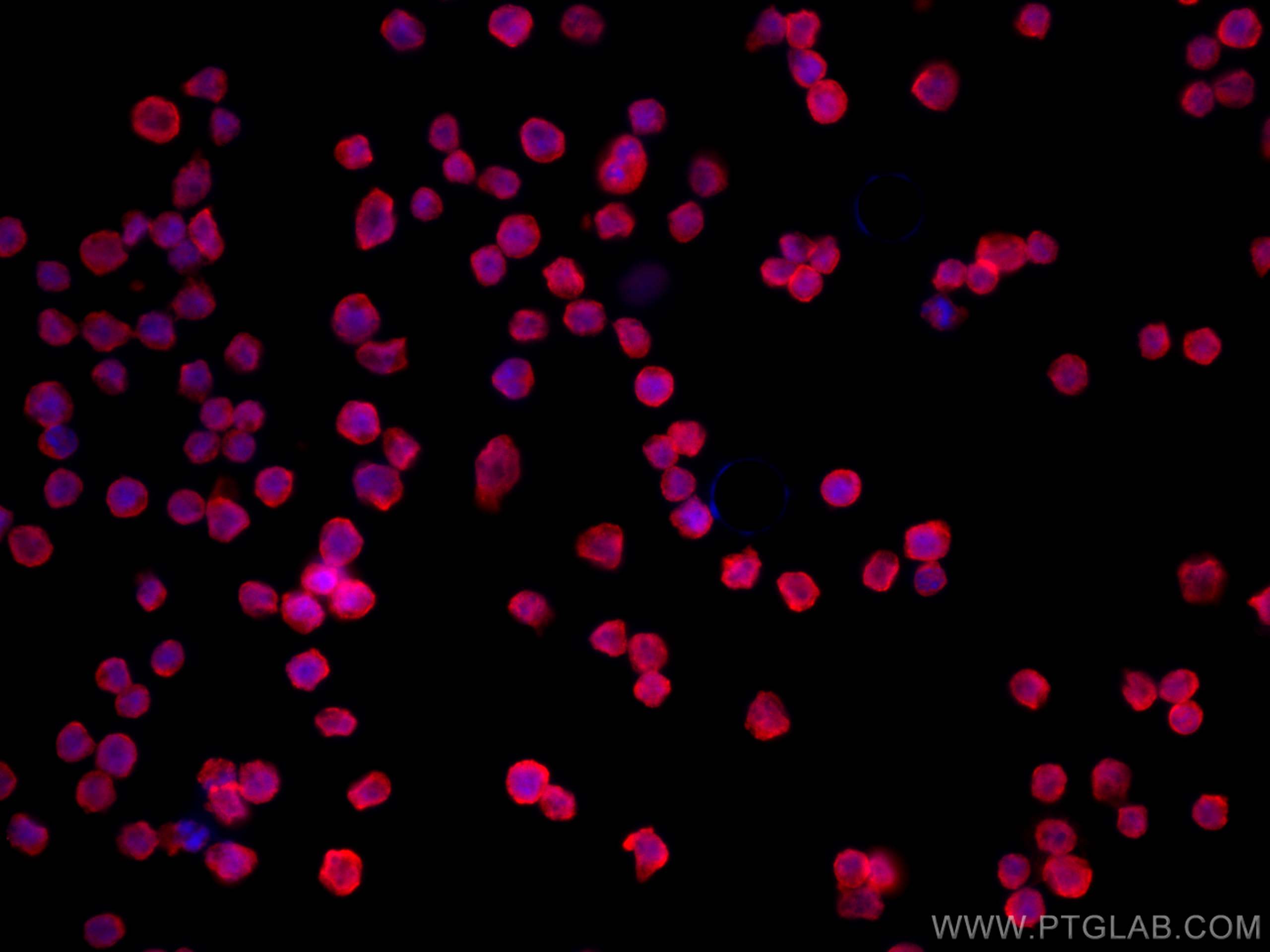CD24 Monoklonaler Antikörper
CD24 Monoklonal Antikörper für IF/ICC
Wirt / Isotyp
Maus / IgG1
Getestete Reaktivität
human
Anwendung
IF/ICC
Konjugation
CoraLite®594 Fluorescent Dye
CloneNo.
1H5C4
Kat-Nr. : CL594-67627
Synonyme
Geprüfte Anwendungen
| Erfolgreiche Detektion in IF/ICC | Daudi-Zellen |
Empfohlene Verdünnung
| Anwendung | Verdünnung |
|---|---|
| Immunfluoreszenz (IF)/ICC | IF/ICC : 1:50-1:500 |
| It is recommended that this reagent should be titrated in each testing system to obtain optimal results. | |
| Sample-dependent, check data in validation data gallery | |
Produktinformation
CL594-67627 bindet in IF/ICC CD24 und zeigt Reaktivität mit human
| Getestete Reaktivität | human |
| Wirt / Isotyp | Maus / IgG1 |
| Klonalität | Monoklonal |
| Typ | Antikörper |
| Immunogen | CD24 fusion protein Ag11679 |
| Vollständiger Name | CD24 molecule |
| Berechnetes Molekulargewicht | 8 kDa |
| Beobachtetes Molekulargewicht | 42 kDa |
| GenBank-Zugangsnummer | BC007674 |
| Gene symbol | CD24 |
| Gene ID (NCBI) | 100133941 |
| Konjugation | CoraLite®594 Fluorescent Dye |
| Excitation/Emission maxima wavelengths | 588 nm / 604 nm |
| Form | Liquid |
| Reinigungsmethode | Protein-G-Reinigung |
| Lagerungspuffer | PBS with 50% glycerol, 0.05% Proclin300, 0.5% BSA |
| Lagerungsbedingungen | Bei -20°C lagern. Vor Licht schützen. Nach dem Versand ein Jahr stabil. Aliquotieren ist bei -20oC Lagerung nicht notwendig. 20ul Größen enthalten 0,1% BSA. |
Hintergrundinformationen
CD24 (known as heat stable antigen) is a small highly glycosylated GPI-linked sialoprotein. It is normally expressed at the surface of most B lymphocytes and differentiating neuroblasts, and it is also up-regulated in a wide variety of cancers. Studies have shown that CD24 functions in the regulation of B-cell apoptosis, leukocyte signal transduction, and leukocyte adhesion. Since it is highly glycosylated, the apparent molecular weight of CD24 could be variable, ranging from 30 kDa to 70 kDa. (Ref: Akihiko Sano, MD., 2009)
Protokolle
| PRODUKTSPEZIFISCHE PROTOKOLLE | |
|---|---|
| IF protocol for CL594 CD24 antibody CL594-67627 | Protokoll herunterladen |
| STANDARD-PROTOKOLLE | |
|---|---|
| Klicken Sie hier, um unsere Standardprotokolle anzuzeigen |


